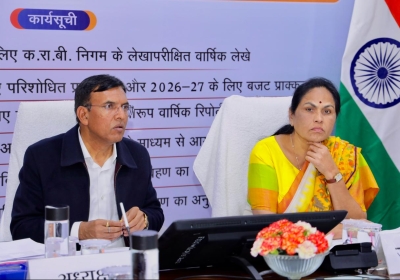.jpeg)
No End to the Russia- Ukraine War after 500 Days.
500 Days of Unceasing Conflict: Ukrainians Grapple with an Elusive Peace
Russia's ongoing war against Ukraine has lasted for 500 days, resulting in significant economic consequences for both countries and others due to fluctuating commodity prices.
Over this period, Russia has faced increased military expenses and encountered difficulties due to embargoes and trade bans imposed by Western countries. The EU, G7 countries, and Australia have blocked Russian Central Bank reserves, amounting to €300 billion ($326.6 billion), since the beginning of the war. Furthermore, around 70% of the assets of the Russian banking system and approximately €20 billion in assets belonging to over 1,500 individuals and entities are under Western sanctions, according to a recent report by the European Council.
While initially benefiting from rising energy prices in the first half of 2022, Russia's revenues have been limited by sanctions targeting oil imports. In January 2023, Russia's oil revenues decreased by over one quarter compared to the previous year, with an even steeper decline of over 40% in February, as reported by the International Energy Agency.
Various international institutions, including the World Bank, the Organization for Economic Co-operation and Development (OECD), and the International Monetary Fund (IMF), have indicated that the Russian economy contracted by 2.1% in 2022, with the possibility of further contraction in 2023. Projections suggest that imports will increase in 2023, while exports are expected to decline globally.
In 2022, Russian exports amounted to $588.3 billion, but are projected to decrease to $465.9 billion in 2023, $484 billion in 2024, and $496.2 billion in 2025. Imports, on the other hand, reached $280.4 billion in 2022 and are forecasted to rise to $313.8 billion in 2023, $332.8 billion in 2024, and $347.4 billion in 2025.
Since the commencement of Russia's "special military operation" against Ukraine on February 24, 2022, many sectors and countries have announced sanctions or suspensions, aiming to exert pressure on the Russian economy. Companies have halted operations and deliveries in Russia, while others have discontinued investments or withdrawn partnerships in Russia and Belarus.
In terms of economic indicators, industrial production in Russia contracted by 0.6% in 2022, while retail trade turnover experienced a decline of 6.7% compared to the previous year.
Military expenses
According to data from the Stockholm International Peace Research Institute (SIPRI) in June, the share of the national defense budget in the total government budget has increased. In 2023, it rose to 23% from 21% in 2022 and 20% in 2021. The share of the national defense budget in the country's GDP has also seen an increase, reaching 4.4% in 2023 compared to 3.6% in 2021. For the year 2023, the national defense budget has been announced as 4.98 trillion rubles ($54.7 billion).
Other costs
In addition to military spending, Russia has had to allocate significant funds for rebuilding investments in the newly occupied territories, as stated in the SIPRI report. In September 2022, Russia occupied the Donetsk and Luhansk regions, as well as parts of the Kherson and Zaporizhzhia oblasts. A plan has been announced by Russia to spend 1.88 trillion rubles between 2024 and 2026 on state institutions for the newly annexed regions. In the upcoming years, Russia will need to allocate billions of rubles for various sectors such as infrastructure, healthcare, and education in these regions.
Ukraine
In 2022, the Ukrainian economy contracted by 29.1% compared to the previous year, after experiencing a growth of 3.4% in 2021. The increase in poverty was significant, rising from 5.5% to 24.2% in 2022. This resulted in an additional 7.1 million people falling into poverty. The ongoing war in Ukraine had a severe impact on various sectors of the economy, including tourism, production, agriculture, energy, and transportation.
According to the World Bank, the damage to essential health, education, and social protection services amounted to $83 billion. The estimated reconstruction and recovery needs in these sectors alone were nearly $69 billion. The overall recovery and reconstruction requirements for the country were estimated to be more than $400 billion by the World Bank. The Center for Disaster Philanthropy reported that approximately 40% of the population, or 17.6 million people, require humanitarian assistance in Ukraine in 2022. Among those in need, 45% are women and 23% are children.
The United Nations estimates that over 4 million Ukrainian refugees may require protection and assistance in neighboring countries in the coming months. From February 25 to the end of May, recorded commitments to Ukraine, including military, financial, and humanitarian aid, amounted to €165 billion, as highlighted by the Kiel Institute. Ukraine's military spending significantly increased in 2022, reaching $44 billion, which accounted for 34% of the country's GDP, according to SIPRI (Stockholm International Peace Research Institute).





